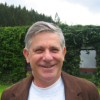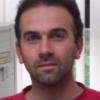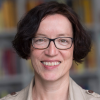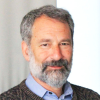ON DEMAND International PDE Conference 2022 - DAY TWO

Prof. Neil Trudinger - Mathematical Sciences Institute / The Australian National University
Convexity theory of generating functions
*No presentations slides published.
Generating functions are nonlinear extensions of affine functions, and more generally cost functions in optimal transportation, which were originally introduced by us as a framework to extend the PDE theory of optimal transportation to near field geometric optics. In this talk, I will describe a geometric approach to the underlying convexity theory, which uses minimal smoothness conditions and simplifies previous arguments even in the smooth case.
Further Research:
Loeper, G., Trudinger, N.S.: On the convexity theory of generating functions, preprint, arXiv: 2109.04585 (2021)

Jan Kristensen - Mathematical Institute, University of Oxford
Morrey's problem in classes of homogeneous integrands
The question of whether rank-one convexity implies quasiconvexity is often called Morrey's problem. Sverak has shown that the answer is no in general and so a number of modifications have been proposed over the years. In this talk I will discuss some of these where positive answers have been found recently. The talk is based on joint work with Kari Astala (Helsinki), Daniel Faraco (Madrid), Andre Guerra (IAS) and Aleksis Koski (Helsinki).

Prof. Didier Bresch - Université de Savoie (Mont Blanc) / Centre National de la Recherche Scientifique
On the mean-field limit of the Vlasov-Fokker-Planck equations
In this talk, I present a recent new approach introduced in collaboration with P.-E. Jabin and J. Soler to justify the mean-field limit of stochastic systems of interacting particles, leading to the first ever derivation of the mean-field limit to the Vlasov-Poisson-Fokker-Planck system for plasmas in dimension~2 together with a partial result in dimension~3.

Prof. Helge Holden - Norwegian University of Science and Technology
Two sides of the Camassa–Holm equation: A Lipschitz metric and a noisy version
We will study two aspects of the Camassa–Holm equation, a nonlinear PDE on the line that is fully integrable and allows for solitary solutions. Solutions of the equation experience wave breaking in finite time, and loss of uniqueness.
First we introduce a Lipschitz metric that compares two different conservative solutions of the equation. This is joint work with J.A. Carrillo (Oxford) and K. Grunert (NTNU).
Next, we study a stochastic perturbation of a regularized version the equation. Here we show existence of a unique strong solution. This is joint work with Kenneth H. Karlsen (Oslo) and Peter H.C. Pang (NTNU)

Prof. Barbara Niethammer - Hausdorff Center of Mathematics / University of Bonn
On an obstacle problem for cell polarization
Cell polarization in response to an external chemical signal plays a crucial role in many biological processes such as the motion of cells. We discuss here a bulksurface reaction diffusion equation and derive in the regime of large rate constants a nonlocal obstacle type problem. For this limit system we prove global stability of steady states, characterize the paramter regime for the onset of polarization and discuss regularity properties in the evolution of the free boundary.

Prof. Charles Fefferman - Princeton University
A PDE for Agnostic Control
The talk presents a novel flavor of control theory giving rise to a PDE about which (as far as I know) there are so far no rigorous results.

